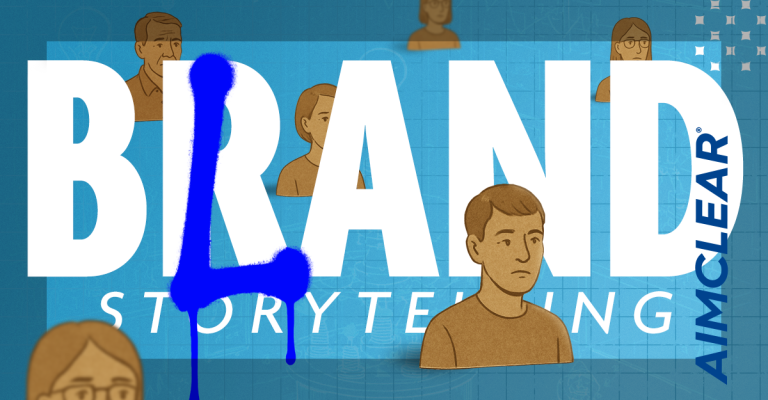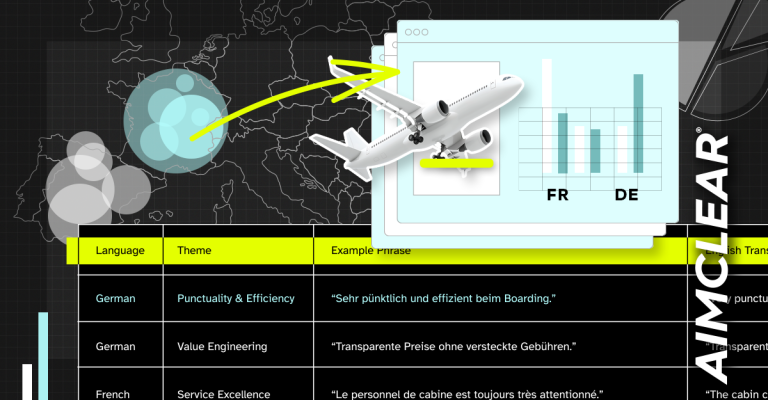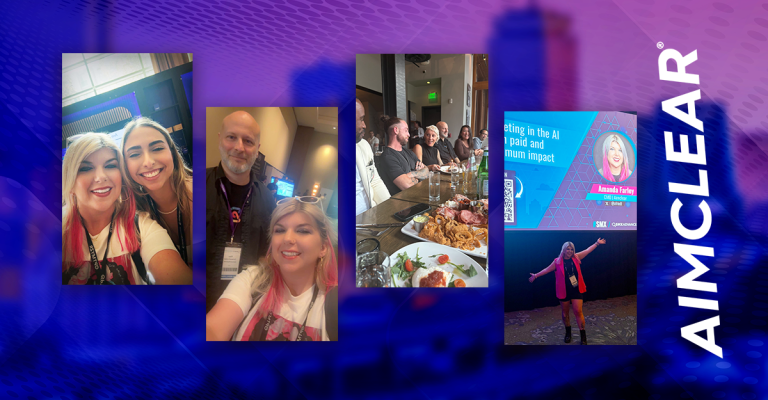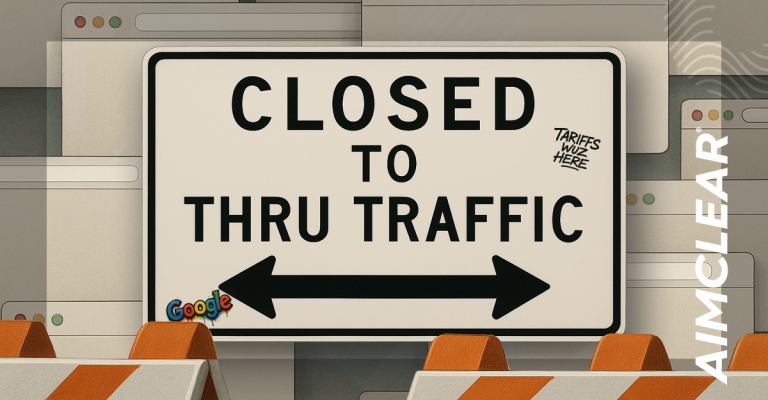Classic AI ‘Tells’ That Make You Look Like a Bot
Some writing makes you wonder: Was this crafted by a person? Or was it just blenderized mashup of prompts and posturing?
We’re sick of dead-eyed structure, 10/10 try-too-hard energy, unfortunate emoji crime scenes, and a slop bucket overflowing with not-ready-for-primetime blather.
We’ve gathered our least favorite ways to publicly embarrass oneself with AI writing. If your copy does half this stuff, bury it behind the garage and don’t mark the location.
Emoji storms: Green check boxes, lightning, fire, and emoji exclamation points have ruined discretionary emojis forever. If you didn’t use 12 emojis in your LinkedIn jive or email copy in the past, just don’t. Emojis make writers look lazy and UNimaginative now and like AI is writing their shit.
And just in case you’re wondering what an emoji storm actually looks like, let’s recreate one in its full cringey glory. Behold the horror via this AI Emoji Crime Scene example: ✅ 10x your productivity 🚀 with powerful AI tools 🤖 to automate 💥 and dominate 🏆. Don’t miss this game-changing ⚡️ opportunity 💼 to scale 📈 smarter!
Abnormally perfect structure: We all use bullets, numbers, set-up paragraphs, and other common structural elements in our writing, but AI is nearly always more freakishly uniform than humans. Rough it up a little and be at least slightly imperfect in structure. Otherwise, over use of dramatic structure when it’s supposed to be you doing the writing just is…ick.
Em Dashes “—”: Em dashes used to be surgical, precise, deliberate, and sparingly used. Now? AI sprays them like cheap bar restroom cologne. What was once a nuanced tool has become a dead giveaway. Even if Em dashes are part of your style, dial it back. Savvy readers will assume a bot wrote it.
“It’s more than X it’s Y”: This is my PET PEEVE (yes I’m shouting). Other permutations include: “It’s not X, it’s Y,” “It’s not only X, but also Y, ” and other AI crap dumps that say with high likelihood that you’re an AI idiot. This construct creates fake depth by negating one idea (X), and replacing it with another (Y), that isn’t necessarily incompatible.
The fake writing staple leans on manufactured contrast and rhetorical inversion to sound revelatory while saying almost nothing, a syntactic sleight-of-hand pretending to be insightful. Writers have been using these twists forever, but AI made the play pedestrian. Pencil this one in under, “AI killed the human writer.”
Unbelievable Table Structure: Oh wow, look, another exquisitely formatted table comparing feature sets like you’re pitching NASA procurement. Because nothing says, “I’m a real human with thoughts and feelings” like a perfectly aligned 7-column matrix titled “Benefits Comparison Across Organizational Impact Dimensions.” Typical humans don’t spew never-ending tables. We share bullets, make half-lists, and forget column headers. If your content reads like it was designed in Excel with reverence, it’s pretty evident you didn’t write it.
Yeah, we’ve used tables forever. They work when data clarifies context. Avoid grid-lined monstrosities that convolute, rather than add context. If your table looks like it’s terrified of whitespace and exists purely to be symmetrical, congrats! You’ve entered AI layout hell.
The Over-Over-Explanation: Every thought is followed by a clarification. Then a second. Then a moral. AI writes like it’s afraid of being misunderstood. If you find yourself explaining what you just said… then rephrasing it for the imaginary village idiot in the back… congratulations, you’re officially overfitting your own intelligence.
Obvious Synonym Stuffing: If “revenue-driven content for B2B SaaS scaling strategies” shows up six times in three paragraphs, take a breath and a red pen to your draft. Humans don’t usually speak in optimized word clouds, but AI does. Keyword-stuffing nukes trust and plays like an SEO engine cosplayer stuck in 2011.
Circular Questions with Obvious Answers: “Want to increase ROI while spending less? Who doesn’t?” Barf. This is Mad Libs copywriting with a bot behind the wheel. Humans don’t write rhetorical questions with middle-school answers unless they’re working retail email blasts from 2012.
Premature “Here’s the Thing” Syndrome: “Here’s the thing.” “At the end of the day.” “The truth is.” Those sound like setup lines for content that has nothing to deliver. Bots use crutches like this to fake gravitas. Real writers actually… deliver the thing. No throat-clearing. No fake drums.
Generic Hook Vomit: “Imagine a world where…” No. Stop. Also: “What if you could…” Just say what you’re saying. Your reader doesn’t need a metaphysical warm-up exercise before learning how to do better PPC.
Sentence Variation That Feels… Clocked: Short. Long. Short. Long. Medium. Short. Overdone burstiness flags AI as trying not to sound like AI and failing harder. Humans don’t pace like iambic bots with syntax OCD. Vary naturally, not mathematically.
The Inescapable Call-to-Action Cliché: “Ready to take your content to the next level?” That’s a dead giveaway. AI uses ladders and levels because it doesn’t know how humans decide things. If your CTA sounds like it came from a SaaS pop-up ad, it probably did. Delete it.
Randomly Unnecessary Transitions: “On the other hand…” “That being said…” “Nevertheless…” Why? No one said anything to contradict. You’re responding to imaginary opposition, probably your own outline. AI fills space with transitions to glue together filler. Readers aren’t fooled. They’re annoyed. Make sure any such transitions have actual purpose before letting them through the final cut.
Overcooked Positivity: “Unleash your full potential with powerful, game-changing solutions!” Oh look, it’s a middle manager’s vision board wearing a trench coat. If your prose could double as HR swag, then AI’s been whispering in your draft.
Spacer bars: The proliferation of spacer bars has skyrocketed in business writings we see. They are so rampant that, even if you write by hand and you’re tempted to insert a spacer bar… remember that you’re not formatting the Ten Commandments. You’re sending a Slack follow-up or other daily action. No one needs a dramatic pause after “Let’s sync Friday.” This isn’t a stage play. It’s AI pretending you’re too important for paragraphs.
Overly Choreographed Empathy: “We understand your struggles. We’re here for you.” Uh-huh. No you’re not. You’re a chatbot with a tone setting. This isn’t a trauma support group—it’s an ad for SaaS scheduling software. Performative empathy is a giant red flare. Write like you’ve actually met people.
Unnatural Bold Text: Stop bolding every third word like you’re training readers who won’t read the first two words. Instead of strengthening writing, Random emphasis can weaken copy like a teleprompter malfunction. Bold is for true highlights, not “get ready, this might matter” energy. If you need a ton of random bold, rewrite your shit better.
The Algorithmic Listicle Parade: “Here are 7 reasons why productivity hacks will change your life.” Numbered listicles have their place, sure. But when every paragraph follows a template like it’s strapped into a rollercoaster track with the same rhythm, length, tone, and you’ve been replaced by a mildly caffeinated autocomplete engine.
Yes, this is a list but not a listicle, an important difference. Think of this article as an intervention so you don’t sound like a refrigerator with Grammarly Premium.
LinkedIn-Optimized Hustle Speak: “Crushing it. Leveling up. Doubling down. Leaning in. Scaling fast.” What does that even mean? Hustle bro language was already cringe five years ago, but now it’s back, scrubbed clean by AI and shoved into posts by people trying to sound like thought leaders while thinking zero thoughts. If your copy sounds like GaryVee in a headlock, reconsider.
The Faux Mic Drop Ending: “Think about that.” Let that sink in. Hard no. You didn’t earn the mic drop. If your ending needs a thud to feel complete, you missed your shot in the body. Real closers don’t tell readers when to be impressed because they just are. Your point should be the mic drop. Telling someone you dropped the mic? Then maybe you didn’t.
Many of the tips above simply apply basic tenets of good writing. Common sense should prevail above all else. Read your AI-generated (or AI-supported) content with a critical eye. Have a friend or colleague do the same. Ask yourself: “Would I want to read this if it were served up to me?” People crave content that provides them value. Above all, friends don’t let friends write dumbass AI..
And for those of you who write content for a living, avoid having AI define your voice. A unique voice can help set a brand apart in our content-cluttered lives. There are proven ways that a writer or content creator can train AI to mimic their voice. Authenticity matters, and we’ll be sharing more about how to turn AI into an authenticity power tool in an upcoming post.









